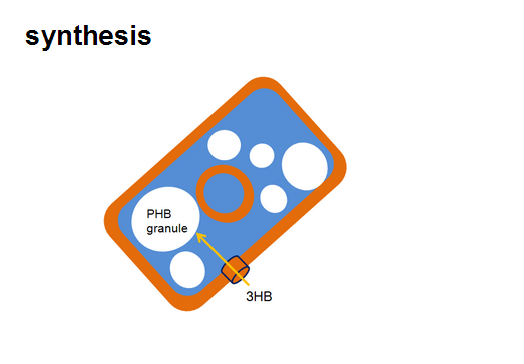Team:Imperial College/BioPlastic Recycling: PLA
From 2013.igem.org
Iain Bower (Talk | contribs) |
|||
| (8 intermediate revisions not shown) | |||
| Line 1: | Line 1: | ||
{{:Team:Imperial_College/Templates:header}} | {{:Team:Imperial_College/Templates:header}} | ||
| - | < | + | __TOC__ |
| - | < | + | <h1>Recycling PLA</h1> |
| - | < | + | <h3 id="overview">Overview</h3> |
| - | < | + | </html> |
| - | < | + | |
| - | < | + | <p> The bioplastic recycling module will look at closing the loop on bioplastics before they even begin to gain traction as a viable and more desirable plastic. We will be looking at degrading and synthesising polylactic acid (PLA) and poly-3-hydroxybutyrate (P3HB) using a fully biological system. The byproducts from the breakdown of our bioplastics will be separated then purified in order to allow them to be reused in industry</p> |
| - | < | + | |
| - | </ | + | [[File:SynthesisIC.jpg|thumbnail|left|600px|A diagrammatic representation of our P3HB recycling system]] |
| - | </ | + | |
| - | + | <p>Polylactic acid (PLA) is for the most part, a chemically derived aliphatic polyester. PLA can be moulded into a product and is used as a feedstock in 3D printing. The bioplastic has high strength and is a thermoplastic. It represents a growing market within the plastic industry, one which will inevitably require degradation at a recycling plant [http://naldc.nal.usda.gov/download/4048/PDF]. Currently only tentative pilot studies have been made towards engineering a biological mechanism to enhance degradation. We thus intend to use shredded PLA as a feedstock to breakdown this bioplastic, with enzymes capable of breaking both L- and D- enantiomeric bonds.</p> | |
| - | < | + | |
| - | < | + | |
| - | < | + | |
| - | <p> | + | <b>References</b> |
| - | < | + | <p>[1] http://naldc.nal.usda.gov/download/4048/PDF </p> |
| + | |||
| + | <p></p> | ||
| + | |||
| + | <h2 id="specification">Specification</h2> | ||
| + | |||
| + | <p>Our bacteria should be able to resist any potential toxicities that are associated with PLA or L-Lactic Acid</p> | ||
| + | <p>Our bacteria should be able to degrade PLA</p> | ||
| + | |||
| + | <h2 id="modelling">Modelling</h2> | ||
| + | |||
| + | <p></p> | ||
| + | |||
| + | <h2 id="design">Design</h2> | ||
| + | |||
| + | <p></p> | ||
| + | |||
| + | <h2 id="results">Results</h2> | ||
| + | |||
| + | <p></p> | ||
| + | |||
| + | <h2 id="protocols">Protocols</h2> | ||
| + | |||
| + | <p></p> | ||
| + | |||
| + | <h2 id="safety">Safety</h2> | ||
| + | |||
| + | MSDS sheets for relevant compounds e.g. L-Lactic acid | ||
| + | |||
| + | <html> | ||
| + | </div> | ||
</div> | </div> | ||
| + | |||
| + | </html> | ||
| + | {{:Team:Imperial_College/Templates:footer}} | ||
Latest revision as of 23:22, 23 September 2013
Contents |
Recycling PLA
Overview
</html>
The bioplastic recycling module will look at closing the loop on bioplastics before they even begin to gain traction as a viable and more desirable plastic. We will be looking at degrading and synthesising polylactic acid (PLA) and poly-3-hydroxybutyrate (P3HB) using a fully biological system. The byproducts from the breakdown of our bioplastics will be separated then purified in order to allow them to be reused in industry
Polylactic acid (PLA) is for the most part, a chemically derived aliphatic polyester. PLA can be moulded into a product and is used as a feedstock in 3D printing. The bioplastic has high strength and is a thermoplastic. It represents a growing market within the plastic industry, one which will inevitably require degradation at a recycling plant [http://naldc.nal.usda.gov/download/4048/PDF]. Currently only tentative pilot studies have been made towards engineering a biological mechanism to enhance degradation. We thus intend to use shredded PLA as a feedstock to breakdown this bioplastic, with enzymes capable of breaking both L- and D- enantiomeric bonds.
References
[1] http://naldc.nal.usda.gov/download/4048/PDF
Specification
Our bacteria should be able to resist any potential toxicities that are associated with PLA or L-Lactic Acid
Our bacteria should be able to degrade PLA
Modelling
Design
Results
Protocols
Safety
MSDS sheets for relevant compounds e.g. L-Lactic acid
 "
"




